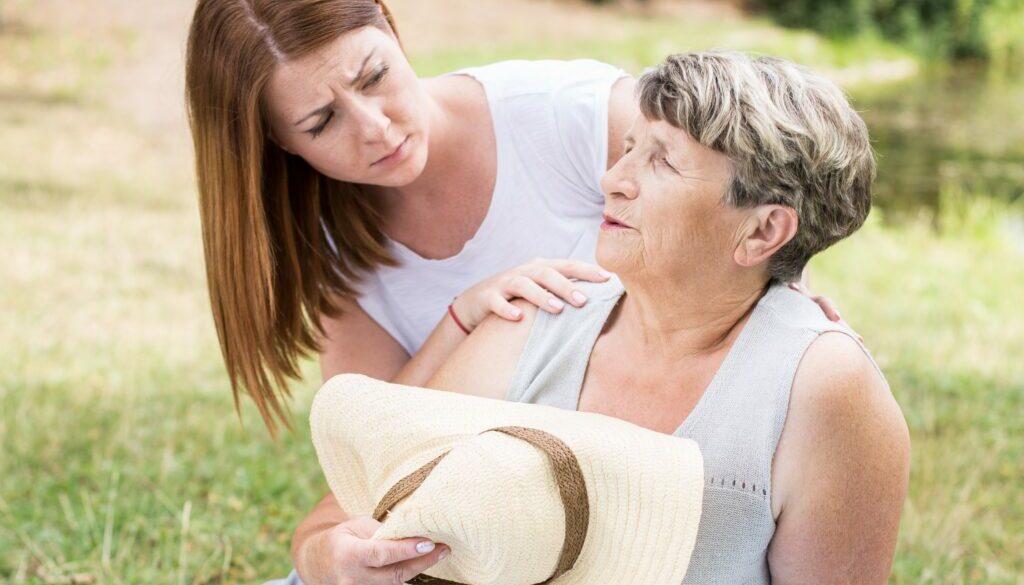Heat Exhaustion vs. Heat Stroke: What’s the Difference
Summer is a great time to be outside, for work or recreation. It’s important to remember that warm-weather activities can put you at an increased risk of dehydration and heat injury.
“Summer heat can be unforgiving and if you are overexposed to the sun this summer, many things can happen,” warns Dr. Tisha Williams, with CMC Primary Care-Bellamy Avenue. “Whether your job requires that you be outside, or you’re spending time gardening, playing golf, or enjoying outdoor destinations like Myrtle Beach or the March Walk in Murrells Inlet, you’ll want to stay vigilant for signs of dehydration, cramps, heat exhaustion, and heat stroke.”
How heat affects the body
During extreme heat, outside time should be limited because the excess temperatures can be dangerous to your health. “Heat is something that can sneak up on you when you’re spending time outside doing something physical or even just relaxing,” expressed Dr. Williams. “Extreme temperatures put a lot of stress on the body. You might think you’re going to be OK, and maybe you are in the morning, but by the afternoon, your core body temperature can really start to climb.”
A normal body temperature typically ranges from 97 to 99 F. In comparison, a fever from an infection is typically above 100.4 F. Heatstroke occurs when the body temperature is 104 F or higher.
According to the Centers for Disease Control and Prevention, hot temperatures can make your body unable to properly cool itself, which can lead to serious health problems. It’s important to know the signs of heat exhaustion and heat stroke so that you can take quick action when you or someone close to you is exhibiting the symptoms.
Heat exhaustion vs. heat stroke
If you find yourself feeling ill or exhausted amidst the heat, you’ll want to know the signs and differences between heat exhaustion and heat stroke so you can properly treat your symptoms.
Heat Exhaustion
“Heat exhaustion occurs earlier in the spectrum of heat-related illnesses,” explained Dr. Williams. “If left unaddressed, heat exhaustion can rapidly progress to the medical emergency that we call heat stroke. Heat exhaustion can present with dizziness, headache, nausea, weakness, unsteady gait, muscle cramps, and fatigue. Your core body temperature will be elevated but below 104 F.”
Heat exhaustion signs and symptoms:
- Heavy sweating
- Pale, cold, clammy skin
- Muscle cramps
- Fast, weak pulse
- Tiredness, weakness
- Dizziness
- Headache
- Upset stomach or vomiting
- Fainting
Heat Stroke
Heat stroke can be a result of heat exhaustion and should be treated as an emergency.
“The main difference between heat exhaustion and heat stroke has to do with core body temperature,” said Dr. Williams. “When that core temperature starts to exceed 103 F then you can experience severe neurologic manifestations like coma, seizure, altered levels of consciousness, and headache. There is typically a change in mental status that occurs too causing delirium, confusion, and even combativeness. And I have to stress that if heat stroke sets in and there’s a delay in cooling, it can lead to organ failure and be fatal.”
Symptoms of heat stroke:
- Very high body temperature (above 103 degrees)
- Red, hot, and dry skin (no sweating)
- Rapid, strong pulse
- Throbbing headache
- Dizziness
- Upset stomach
- Confusion
- Losing consciousness, passing out
How to treat heat-related illness
If you see any signs of heat exhaustion or heat stroke, the CDC says you should seek medical help immediately as you could be dealing with a life-threatening emergency.
“Thankfully, the majority of heat-related illnesses are heat exhaustion or heat cramps. However, heat exhaustion can rapidly progress, so you want to take the necessary precautions. Get out of the heat and initiate rapid cooling of the body. You also want to call 911 immediately,” implored Dr. Williams.
How to cool a person with heat exhaustion:
- Cool, nonalcoholic beverages
- Rest
- A cool (not cold) bath, shower, wet towels, or sponge bath
- Move them to an air-conditioned room
“Rapid cooling saves lives,” stressed Dr. Williams. You want to cool them until they reach a temperature of around 100 degrees. However, treating heat stroke is different and it’s very important to call emergency services promptly because they have treatment protocols that are vital in preventing the long-term catastrophic effects that heat stroke can cause.”
If you suspect heat stroke, you should not give the person fluids, according to the CDC. Instead, cool the body by:
- Placing the person in a cool (not cold) bath or shower
- Apply ice packs to the groin and armpits
- If you can’t get them inside, spray with a garden hose
- Sponge them with cool water or wet towels
- Fan them
- Remove excess clothing
You should continue to cool the person until help arrives or their body temperature falls below 101 F and stays there.
The best treatment for heat-related illnesses is avoiding it in the first place. It’s easier said than done, but there are things you can do to beat the heat.
Preventing heat-related illnesses
It’s important to take precautions to protect yourself in the heat. One way to reduce your risk is to do your most physically demanding outdoor tasks either in the morning when the temperature is lower and the sun’s rays are less powerful, or in the evening when the day cools.
“If you are doing moderate work on a very warm day, you may need to take a cooling break 30 minutes out of each hour,” suggested Dr. Williams. “Heavier work, like digging on a very hot day, you’ll want to limit to 15 minutes and take a 45-minute rest in between. And most importantly stay hydrated. Listen to your body. Don’t ignore the signs of excessive thirst, fatigue, or cramps. You have to give your body some grace in the heat of the summer.”
Wearing light-colored, lightweight clothing can also help reduce your sun exposure. Just make sure your clothes are thin enough to aid in sweat evaporation so your body can help cool itself.
Dr. Williams also recommended staying away from alcohol. “Alcohol is very problematic if you’re outdoors in the heat. Not only does it cause you to lose fluids and dehydrates you, but it can also impair your judgment. And when that happens, you might miss the signs of these heat-related illnesses.”
During the summer months, be sure to check on older adults who are at risk at least twice a day and closely watch them for signs of heat exhaustion or heat stroke. Infants and young children need closer and more frequent observation. People with diabetes, high blood pressure, heart disease, or a mental illness are also at a higher risk for these illnesses.
Spending time in the sun is arguably the best part of summer. Pay close attention to heat advisories in your area and follow Dr. Tisha Williams’ advice to avoid a dangerous situation. Stay safe and have a wonderful Summer.
Exceptional Primary Care all year long
Dr. Tisha Williams knows that nothing matters more than the health of you and your loved ones. She strives to educate and empower her patients so they can make the right decisions to positively impact their health. Conveniently located in the heart of Murrells Inlet, Dr. Williams treats a variety of chronic conditions and illnesses, but she also provides preventive care and wellness exams to keep you healthy all year round. Call today to schedule an appointment at CMC Primary Care-Bellamy Avenue.

Tisha Williams, MD
To set an appointment with Dr. Tisha Williams, call 843-347-8000 today!




